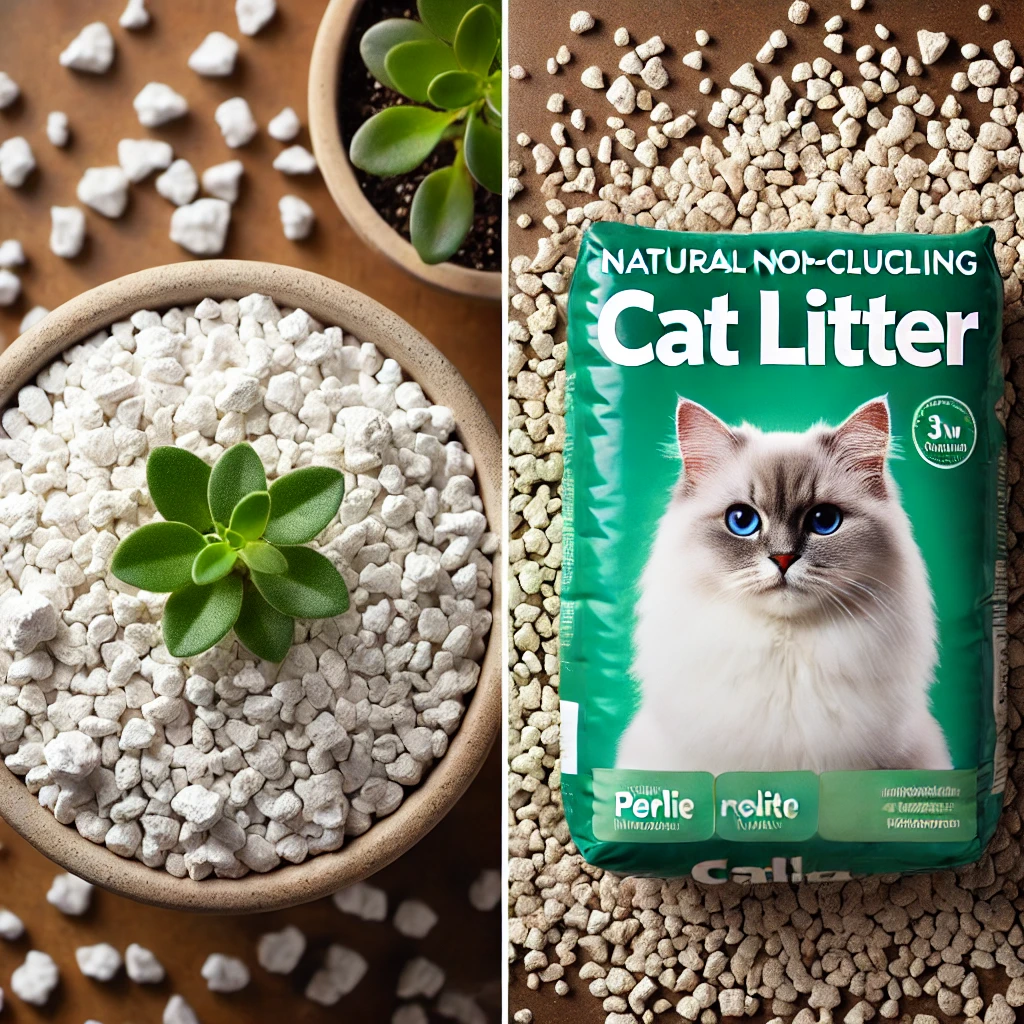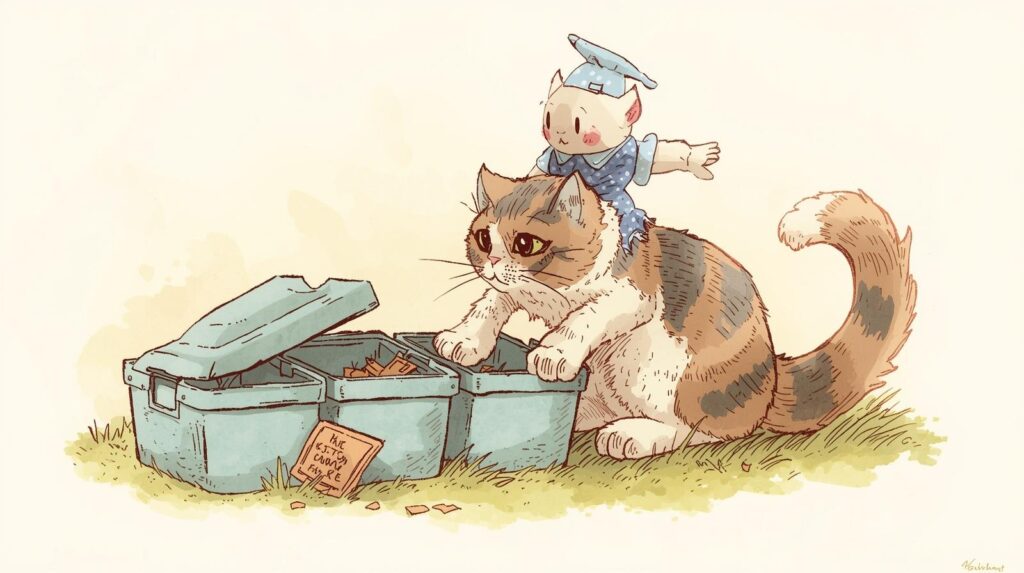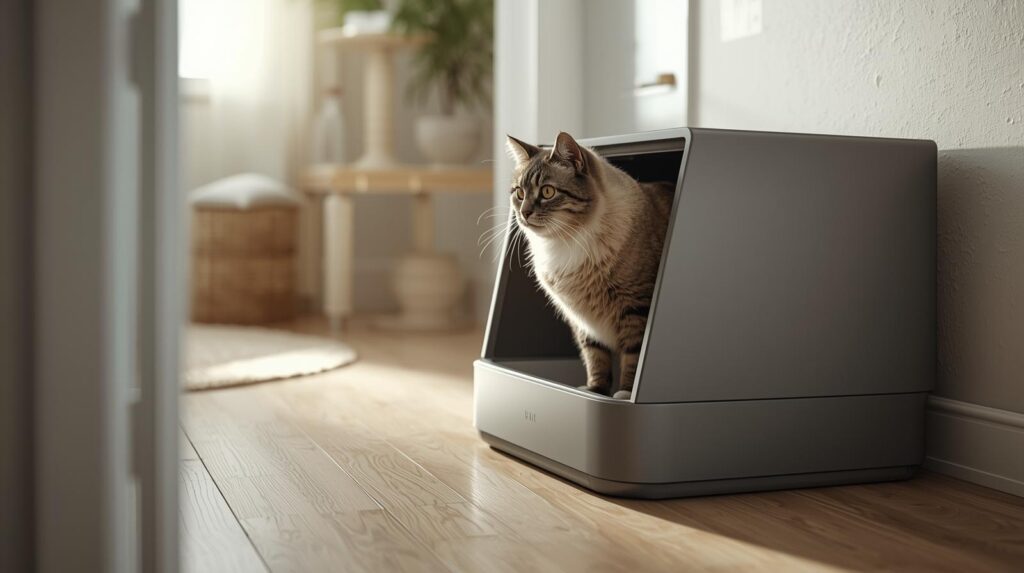Gardening enthusiasts often look for cost-effective alternatives to improve soil aeration and drainage.
Perlite is a popular choice, but what if you have cat litter on hand?
Can you use cat litter as a substitute for perlite in potting mixes and plant care?
Let’s explore the properties of cat litter and whether it can effectively replace perlite in gardening.

Table of Contents
1. Understanding Perlite and Its Role in Gardening
What is Perlite?
Perlite is a naturally occurring volcanic glass that, when heated, expands into a lightweight, porous material.
It is widely used in gardening due to its ability to:
- Improve soil aeration
- Retain moisture without waterlogging
- Enhance root development
- Prevent soil compaction
Perlite is commonly found in potting mixes to create an optimal growing environment for plants.
2. Can You Use Cat Litter as Perlite?
Yes, you can use certain types of cat litter as a temporary substitute for perlite, but with important limitations. Only natural, non-clumping, unscented cat litters made from materials like silica or zeolite are suitable. They can help with drainage and moisture retention, but cat litter is generally heavier and less effective at aerating soil compared to perlite. It also may break down over time and affect soil pH. For best results, use cat litter sparingly (about 10-15% of your potting mix) and monitor your plants closely. However, perlite or other approved soil amendments remain the better, long-term choice for healthy soil aeration and drainage.
Also read: How to Make Zero Waste Shredded Newspaper Cat Litterc
Pros and Cons of Using Cat Litter Instead of Perlite
| Feature | Cat Litter (Silica/Natural) | Perlite |
|---|---|---|
| Aeration | Moderate | Excellent |
| Water Retention | High | Moderate |
| Weight | Heavier | Lightweight |
| pH Neutrality | Depends on the brand | Neutral |
| Decomposition | Some types break down | Does not decompose |
| Availability | Easily available | Available at gardening stores |
Verdict: While certain types of cat litter may be used in place of perlite, they do not provide the same level of aeration and lightweight structure.
Using cat litter as a perlite alternative is not ideal, but it can work in some cases.
3. How to Use Cat Litter as Perlite in Potting Mix?
Things to Consider
If you plan to use cat litter in a potting mix, here are some important factors:
- Choose the right type – Avoid clay-based or clumping cat litter.
- Rinse thoroughly – Some cat litters contain perfumes, deodorizers, or additives harmful to plants.
- Mix in small quantities – Do not replace perlite completely; instead, mix it with other soil amendments.
- Monitor drainage – Some cat litters hold too much moisture, which can lead to root rot.
Best Ratio for Potting Mix
If using natural, unscented, and non-clumping cat litter:
- Mix 10-15% cat litter with potting soil.
- Combine with sand or compost to balance moisture retention.
- Ensure proper drainage to prevent soggy soil conditions.
4. Can You Use Cat Litter as Perlite for Plants?
Plants that thrive in well-draining soil, such as succulents and cacti, require proper aeration.
Cat litter may work if it has a porous structure, but it is not the best option.
Instead, consider these alternatives:
- Pumice – Similar to perlite but more durable.
- Expanded clay pebbles – Great for hydroponics and soil aeration.
- Sand – Improves drainage when mixed with soil.
- Rice hulls – A natural, biodegradable option for better aeration.
Plants That May Benefit from Cat Litter as a Perlite Alternative:
- Orchids (only certain types of natural cat litter)
- Cacti (if mixed with sand)
- Succulents (only in small amounts)
- Hydroponic plants (non-clumping litter may work)
Caution: Always test a small batch before using cat litter widely in your garden
5. Best Cat Litter Types for Gardening Use
Not all cat litters can replace perlite effectively. Some are harmful to plants, while others can improve soil aeration and drainage. If you want to experiment with cat litter in your garden, here are the best types to consider:
1. Non-Clumping Clay Litter (Closest to Perlite)
Non-clumping clay-based cat litter has a texture and structure somewhat similar to perlite. It’s lightweight, porous, and helps improve soil aeration. Unlike clumping versions, non-clumping varieties won’t form hard lumps when wet, making them a safer choice for plant roots. Gardeners often find this type to be the most effective substitute for perlite.
2. Avoid Scented or Chemical Litters
Many cat litters are treated with fragrances, deodorizing agents, or antimicrobial chemicals. While these are great for controlling odors in a litter box, they can be toxic to plants and soil microbes. Always stick to unscented, additive-free cat litter if you’re planning to use it in your garden.
3. Eco-Friendly Biodegradable Options
Some natural cat litters are made from corn, wheat, recycled paper, pine, or sawdust. These eco-friendly options can work well in gardening as a soil amendment. While they don’t mimic perlite’s airy texture, they break down naturally and enrich the soil over time—making them a good option for organic gardening.
6. Alternatives to Cat Litter and Perlite for Soil Aeration
If you want to explore more options beyond cat litter and perlite, consider these common soil amendments:
- Pumice: A volcanic rock similar to perlite but more durable and long-lasting.
- Expanded Clay Pebbles: Popular for hydroponics and soil aeration, they are reusable and lightweight.
- Sand: Improves drainage when mixed with soil, though heavier and less aerating.
- Rice Hulls: A natural, biodegradable option that adds aeration and drainage benefits.
These alternatives often provide better performance and fewer risks than cat litter.
7. Signs That You Should Stop Using Cat Litter in Your Soil
If you notice any of the following signs, it’s time to stop using cat litter as a soil amendment and switch back to traditional options like perlite:
- Poor Drainage: Water pools on the surface or drains very slowly, indicating compaction.
- Soggy Soil: Excess moisture retention causes the soil to stay wet for too long.
- Compacted Soil: Soil becomes dense and hard, restricting root growth and oxygen flow.
- Foul Odor: A bad smell suggests that water is trapped and roots may be rotting.
- Plant Health Decline: Yellowing leaves, wilting, or stunted growth can signal root issues linked to soil quality.
Monitoring these indicators helps protect your plants from damage caused by unsuitable soil conditions.
Conclusion
Cat litter can serve as a cost-effective, readily available alternative to perlite for gardeners in a pinch, but it comes with limitations. Use only natural, non-clumping, unscented cat litters in small amounts mixed with organic matter for best results. Always monitor how your plants respond and be ready to switch back to perlite or other amendments if soil health declines.
For long-term plant health and optimal soil structure, gardening-grade perlite or alternatives like pumice and expanded clay are the safest and most effective choices. Use cat litter sparingly and cautiously—to support your garden, not harm it.
FAQs
Q: Can all types of cat litter be used in gardening?
No, only unscented, non-clumping, natural mineral-based cat litters are suitable for gardening. Clay-based or fragranced litters may harm plants.
Q: How much cat litter should I mix into potting soil?
Limit to about 10-15% of the total mix to avoid negative effects on drainage and aeration.
Q: Will cat litter change my soil’s pH?
Some cat litters may affect soil pH, depending on their material. It’s best to test soil regularly when using cat litter.
Q: Is cat litter a permanent replacement for perlite?
No, cat litter can be a temporary or emergency substitute, but it does not provide the same long-lasting soil benefits as perlite.


